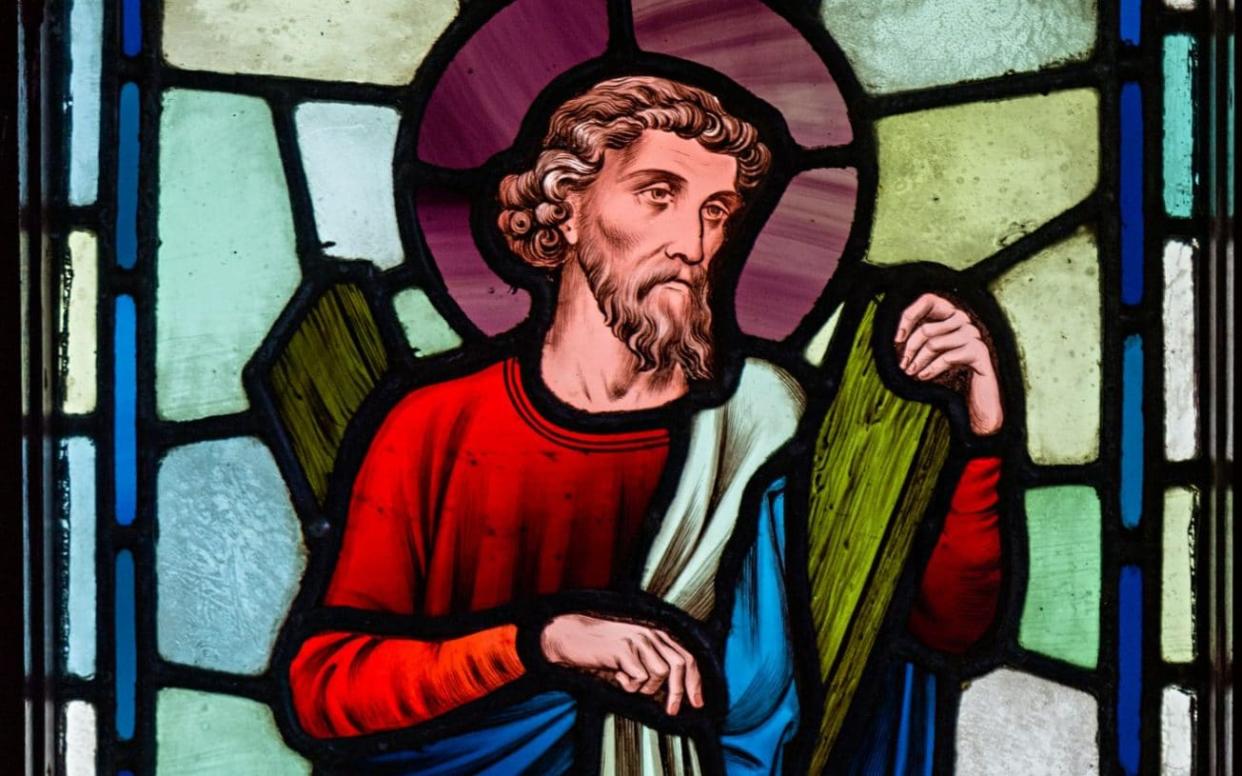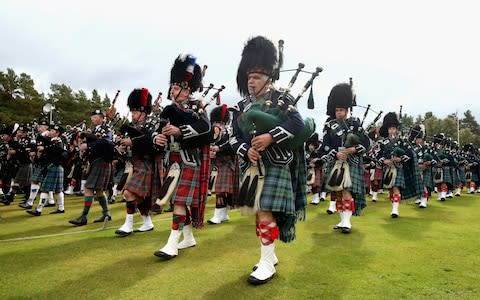St Andrew's Day 2019: How a fisherman became Scotland's patron saint

St Andrew's Day, otherwise known as 'Là Naomh Anndrais' in Scottish Gaelic, is nearly here, with celebrations in honour of the patron saint of Scotland set to take place at the end of this week.
Celebrated annually on November 30, it's also an excuse for Scotland to enjoy a good old bank holiday, which will take place on Monday December 2, this year, due to the patron saint day falling on a Saturday.
But what is St Andrew's Day all about, and what did the figure do that was so saintly? From the history behind Scotland's patron saint day to the country's celebrations, here is everything you need to know about St Andrew's Day.
Who was St Andrew the Apostle?
St Andrew, according to Christianity's teachings, was a fisherman and one of Jesus Christ's apostles who was born in Bethsaida, in Galilee, now part of Israel (a long way from Scotland).
Like Jesus, Andrew died a martyr after being killed by the Romans and was crucified in Greece on an X-shaped cross in 60 AD, rather than the 'T' shape cross that Jesus was crucified on. He apparently felt that he wasn't worthy to die on the same shape of cross as Jesus. This type of cross is also known as a saltire - the symbol that makes up the Scottish flag.
His remains were moved 300 years after his death to Constantinople, now Istanbul, by the Emperor Constantine.
We don't know too much more about him, but he was revered in Scotland from around 1,000 AD although he didn't become its official patron saint of Scotland until Scotland’s independence was declared with the signing of the Declaration of Arbroath in 1320.

How did he become linked with Scotland?
St Andrew's links with Scotland come from the Pictish King Oengus I, according to legend, who built a monastery in the Fife town of Kinrymont after the relics of the saint (said to include a tooth, kneecap, arm and finger bone) were brought to the town from Greece in the eighth century.
The town became a major centre of pilgrimage and was later re-named St Andrews, where the famous Scottish university now stands.
St Andrew was made the patron saint of Scotland after the king's descendant, Oengus II, prayed to St Andrew on the eve of a crucial battle against English warriors from Northumberland, around 20 miles east of Edinburgh.
Legend has it that, heavily outnumbered, Oengus II told St Andrew that he would become the patron saint of Scotland if he were granted victory. On the day of the battle, clouds are said to have formed a saltire in the sky, and Oengus's army of Picts and Scots were victorious.
The Saltire flag - a white cross on a blue background - is said to have come from this divine intervention and has been used to represent Scotland since 1385.
In 1870, the Archbishop of Amalfi sent an apparent piece of the saint's shoulder blade to Scotland, where it has since been stored in St Mary's Cathedral in Edinburgh. The other relics were destroyed in the Scottish Reformation.
How Scots celebrate St Andrew's Day
November 30, 60AD is supposedly the date that St Andrew was crucified, which is why the patron saint's day falls on this date each year, although the bank holiday is on the following Monday if it falls on a Saturday or Sunday.
However, it wasn't until the 18th century that celebrating St Andrew's Day became common in Scotland. And bizarrely the tradition didn't even start in Scotland, but in South Carolina in 1729 where a group of wealthy ex-pat Scots started the 'St Andrew’s Society of Charleston' because they were missing home.
The group became well known in the area for their charitable endeavours, helping the poor and needy and it was from here that St Andrew's societies began to spread around the world.
In 2006 St Andrew's Day was made a bank holiday in Scotland, and has traditionally been a day off for students of St Andrews University. While St Andrew's Day in Scotland and St Patrick's Day in Northern Ireland are bank holidays, St George's Day in England and St David's Day in Wales are not, which is usually a source of some frustration every year.
The day is usually marked by a celebration of Scottish culture, including dancing, food and music, and both the British Prime Minister and Scotland's First Minister give St Andrew's Day messages.

To celebrate St Andrew's Day this year, Savour St Andrews will be holding a range of food and drink events throughout November.
2019 also marks the 10th anniversary of The Saltire Festival, and at this year's event, attendees will be able to enjoy live music and history-themed experiences.
Where else is St Andrew the patron saint of?
St Andrew is also the patron saint of Greece, Russia, Romania, Amalfi in Italy and Barbados, where St Andrew's Day is celebrated as the national day of Independence on the Caribbean island.
As the patron saint of Barbados, St Andrew is celebrated in a number of Bajan symbols including the cross formation of the Barbadian Coat of Arms and the country's national honours system, which styles persons as Knights or Dames of St Andrew.
St Andrew is also the patron saint of the Order of the Thistle, one of the highest ranks of chivalry in the world and second only to the Order of the Garter.
He also keeps busy as the patron saint of fishmongers, fishermen, women wanting to be mothers, singers, spinsters, maidens, sore throats and gout.
November 30 also holds significance in other countries. In parts of eastern and central Europe, including Romania, Russia, Austria, Germany and Poland, the date is associated with single girls' future husbands.
In Romania, it is customary for young women to put 41 grains of wheat beneath their pillow before they go to sleep, and if they dream that someone is coming to steal their grains that means that they are going to get married next year.
Other traditions involve pouring wax through a keyhole into cold water, with the resulting shape determining a girl's future husband's profession.

 Yahoo News
Yahoo News 
